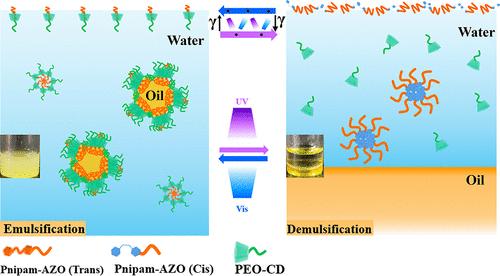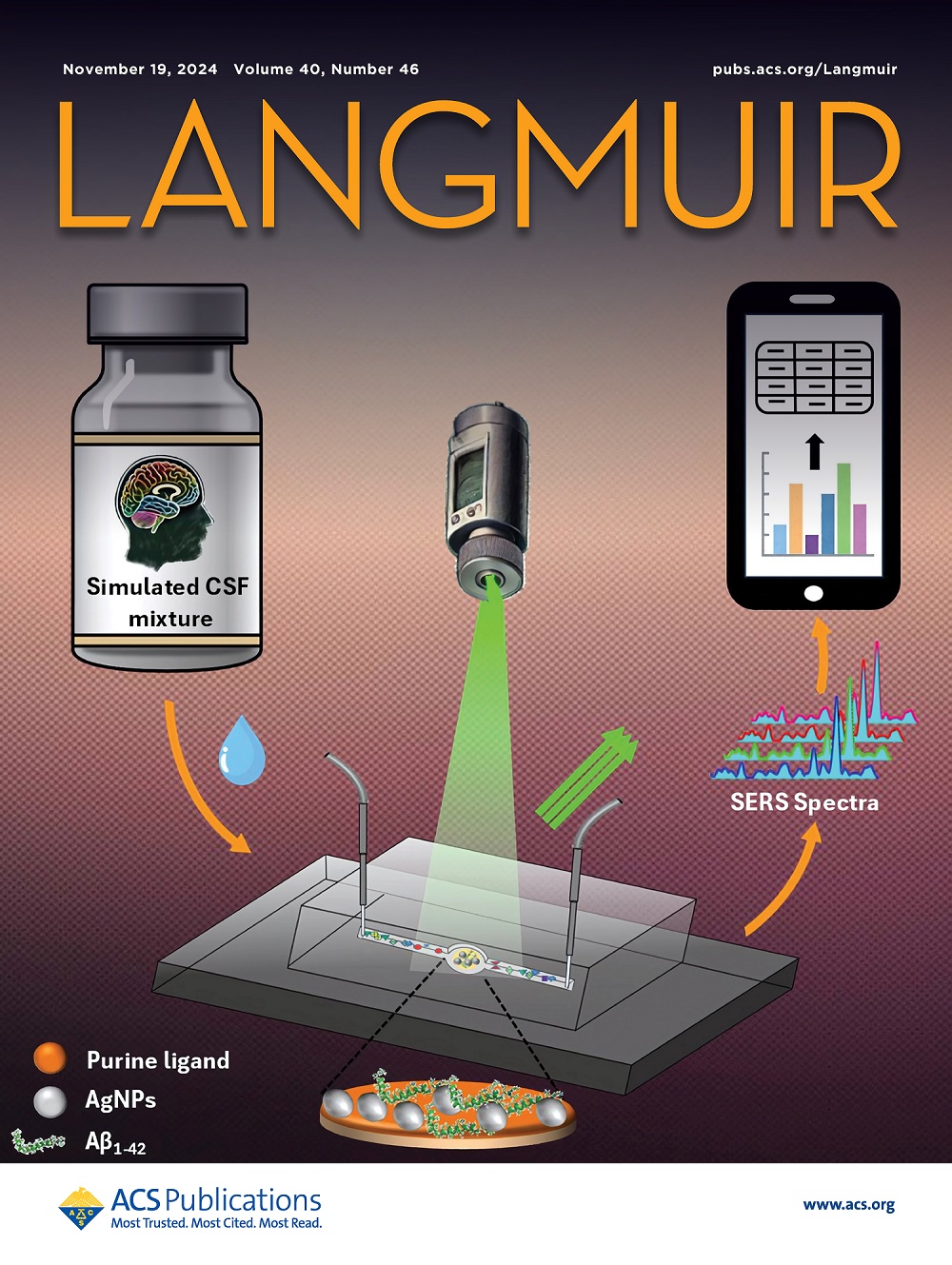Light-Tuning Surface Activity and Emulsion Stability of Macromolecular Surfactants Based on the Host–Guest Interaction
IF 3.7
2区 化学
Q2 CHEMISTRY, MULTIDISCIPLINARY
引用次数: 0
Abstract
Supramolecular chemistry provides more possibilities to design responsive macromolecular surfactants. In this study, poly(N-isopropylacrylamide) (Pnipam) with (azobenzene) AZO as the end group (Pnipam-AZO) was synthesized (P1 and P2), and then an inclusion complex was formed by Pnipam-AZO and β-cyclodextrin-modified poly(ethylene oxide) (PEO-CD). The host–guest interaction was characterized by using UV–vis spectra and GPC. The surface activity of P2 and the PEO-CD inclusion complex (P2@CD-PEO) was studied. Compared with Pnipam-AZO, the surface tension of P2@CD-PEO was higher. The inclusion of the hydrophobic AZO by CD and the attachment of the hydrophilic PEO to P2 lead to the decreasing adsorption amount of Pnipam, which results in increasing surface tension of P2@CD-PEO. Under UV light, the photoisomerization of AZO leads to decoupling of P2 and PEO-CD. Accordingly, the surface tension decreased, and this process was recyclable. The aggregation behaviors of P2@CD-PEO were studied by dynamic laser light scattering. The size and structure of the aggregates formed by P2@CD-PEO were light-responsive. The decoupling of PEO-CD and Pnipam-AZO made the size of the aggregates increase under UV light due to the increasing hydrophobicity of Pnipam-AZO. The emulsification study showed that P2@CD-PEO was an effective emulsifier, which could form oil-in-water emulsion for the petroleum ether and water system. The SEM images of the freeze-dried emulsion showed that the emulsion was stabilized by P2@CD-PEO aggregates that adsorbed at the oil and water interface. Also, demulsification occurs under UV light, and the emulsification and demulsification processes are recyclable.

求助全文
约1分钟内获得全文
求助全文
来源期刊

Langmuir
化学-材料科学:综合
CiteScore
6.50
自引率
10.30%
发文量
1464
审稿时长
2.1 months
期刊介绍:
Langmuir is an interdisciplinary journal publishing articles in the following subject categories:
Colloids: surfactants and self-assembly, dispersions, emulsions, foams
Interfaces: adsorption, reactions, films, forces
Biological Interfaces: biocolloids, biomolecular and biomimetic materials
Materials: nano- and mesostructured materials, polymers, gels, liquid crystals
Electrochemistry: interfacial charge transfer, charge transport, electrocatalysis, electrokinetic phenomena, bioelectrochemistry
Devices and Applications: sensors, fluidics, patterning, catalysis, photonic crystals
However, when high-impact, original work is submitted that does not fit within the above categories, decisions to accept or decline such papers will be based on one criteria: What Would Irving Do?
Langmuir ranks #2 in citations out of 136 journals in the category of Physical Chemistry with 113,157 total citations. The journal received an Impact Factor of 4.384*.
This journal is also indexed in the categories of Materials Science (ranked #1) and Multidisciplinary Chemistry (ranked #5).
 求助内容:
求助内容: 应助结果提醒方式:
应助结果提醒方式:


